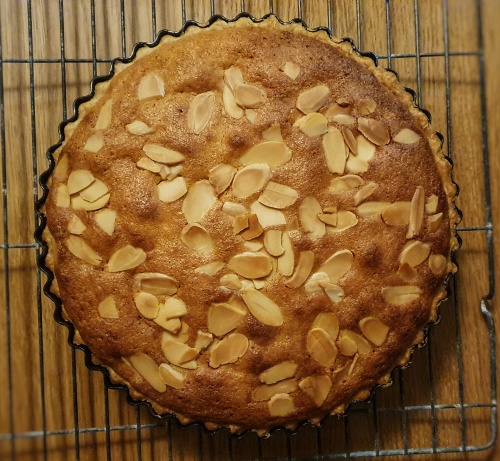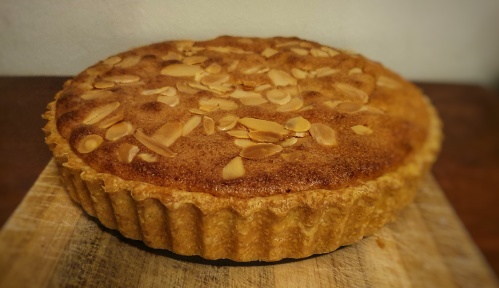At the end of 2024, I gave you my recipe for Bakewell pudding. The plan was to follow with my recipe for Bakewell tart. Alas, life, Christmas and then a holiday to New Zealand got in the way.
But I always get around to things eventually and I give it to you today!
The Bakewell tart, despite it being dearly loved by Brits, was originally made as a cheap, dumbed-down version of the rich Derbyshire pudding: the puff pastry swapped for shortcrust, and the buttery almond filling swapped for an almond-flavoured sponge cake.
I write about the histories of the Bakewell pudding and tart in Knead to Know: A History of Baking, so pick up a copy if you want to know more.
I have been using this recipe for years now and it’s a real crowd-pleaser. When the restaurant was open, I served this tart warm with a lemon-flavoured cream and received a big bear hug from a diner: there could have been no better seal of approval in my book! The secret to its success is that I make a frangipane rather than a sponge cake filling, bound together with just a tablespoon of flour.
If you like the blogs and podcast I produce and would to start a £3 monthly subscription, or would like to treat me to virtual coffee or pint: follow this link for more information. Thank you.
Recipe
Makes 1 x 21 cm/8 inch tart
For the sweet shortcrust pastry:
200 g plain flour
100 g salted butter, diced (or half-and-half butter and lard)
50 g caster or icing sugar
1 egg, well beaten
Cold water (see recipe)
For the filling:
100 g salted butter, softened
100 g caster sugar
2 eggs
100g ground almonds
30 g self-raising flour
¼ tsp almond extract
3 or 4 tbs raspberry jam
30 g slivered almonds
First, make the pastry: Place the flour and fat(s) in a mixing bowl and rub the fat in until the mixture resembles fresh breadcrumbs. You can do this by hand using fingertips or with the flat beater of a stand mixer on a slow speed. Make a well in the centre and add most of the egg. If using a stand mixer, slowly mix it in, pouring more egg into any dry patches. If doing by hand, use a butter knife to mix (this prevents overworking of the dough). You should have a cohesive dough that can be brought together with your hand – if it does seem dry, add a tablespoon of cold water.
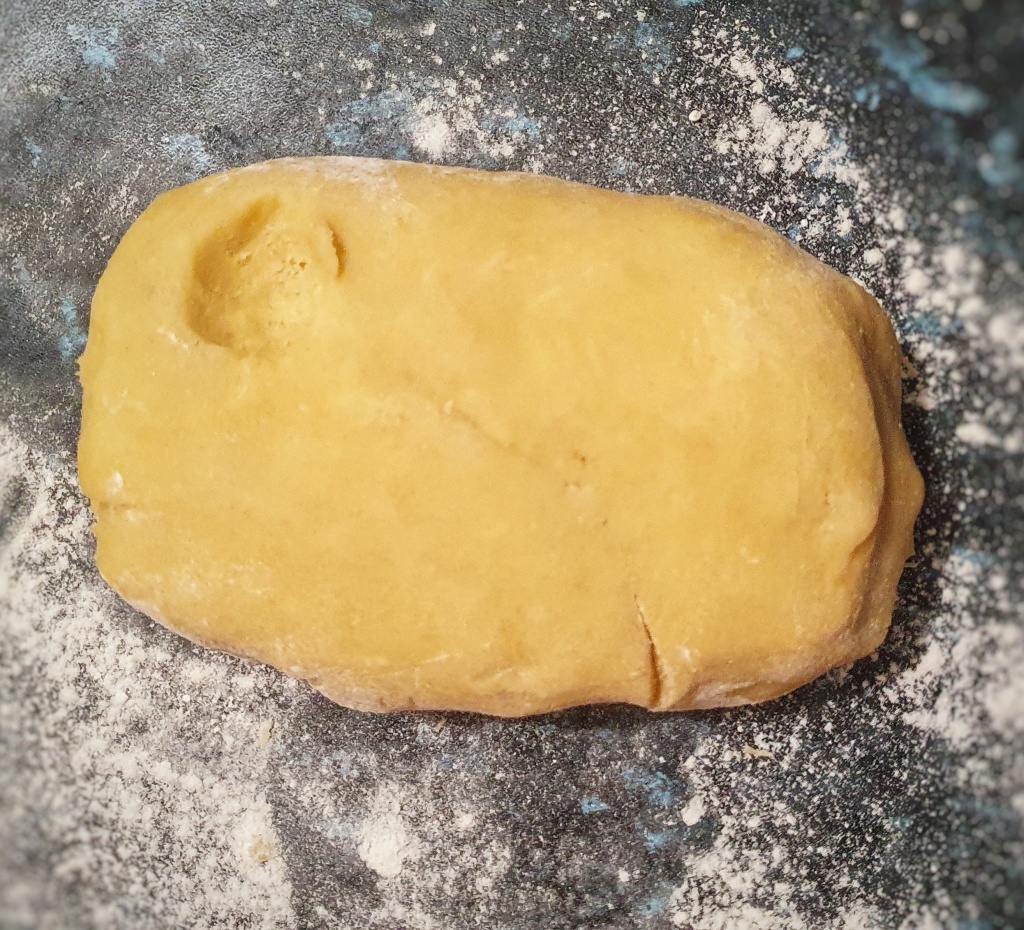
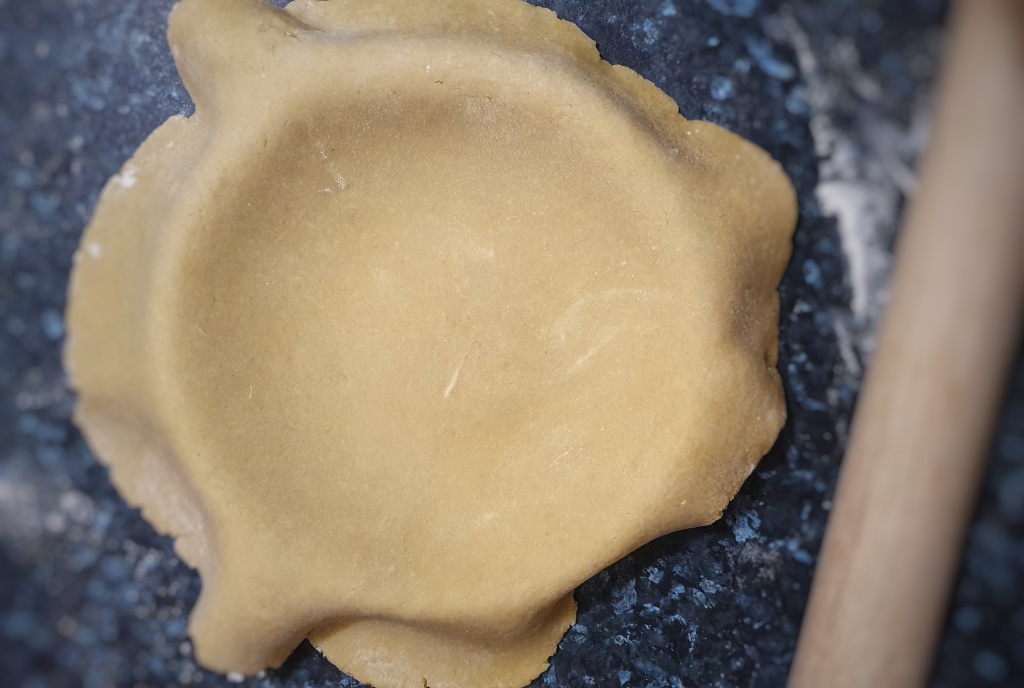
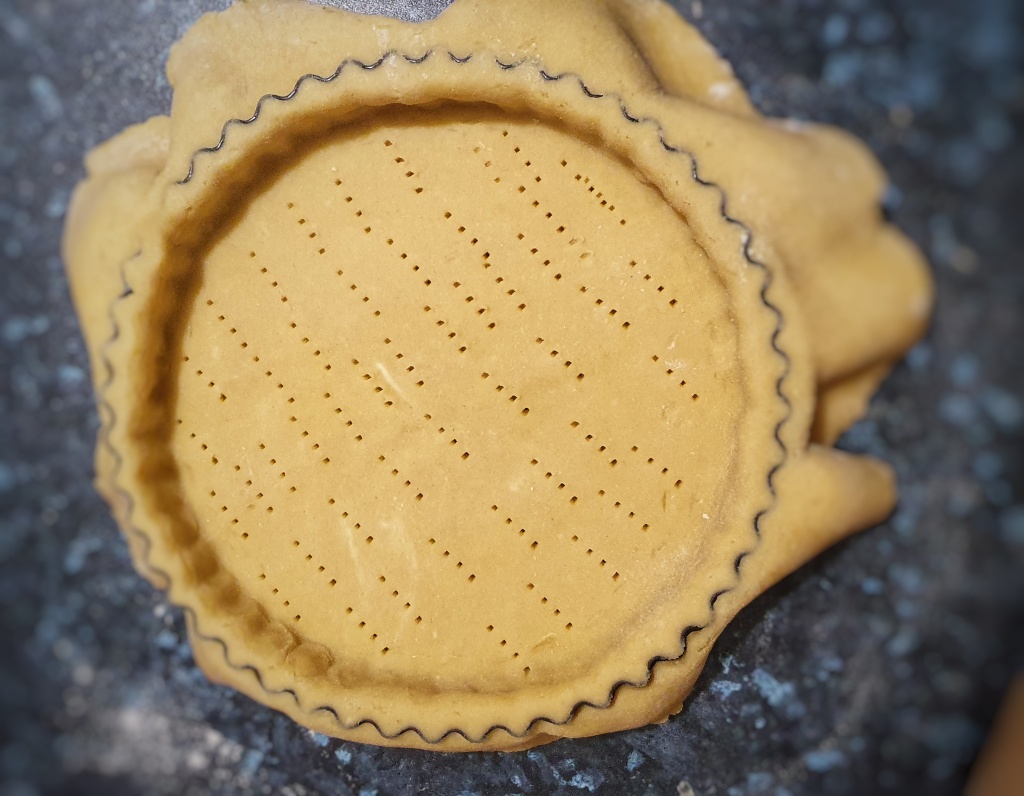
Knead briefly, cover and allow to rest in the fridge for 20 to 30 minutes. Meanwhile, preheat your oven to 180°C and place a baking tray on the centre shelf
On a lightly floured work surface, roll out the pastry to the thickness of a pound coin, and use it to line an 8”/20 cm loose-bottomed tart tin or ring.[1] Prick the base with a fork and place it back in the fridge to firm up.
Now make the filling: using a hand beater or stand mixer, beat together the soft butter, caster sugar, eggs, almonds, flour and extract until smooth.
Take the pastry out of the fridge and spread jam over the bottom leaving a centimetre gap all around the inside edge. Spoon or pipe the mixture first around the edges and then the centre (this stops the jam from rising up the sides of the pastry lining), levelling off with a spatula.
Sprinkle with the slivered almonds and slide the tart onto the hot baking sheet and bake for 40 minutes, turning the heat down to 160°C if the top gets too brown. Cool on a rack, and remove from the tin when just warm.
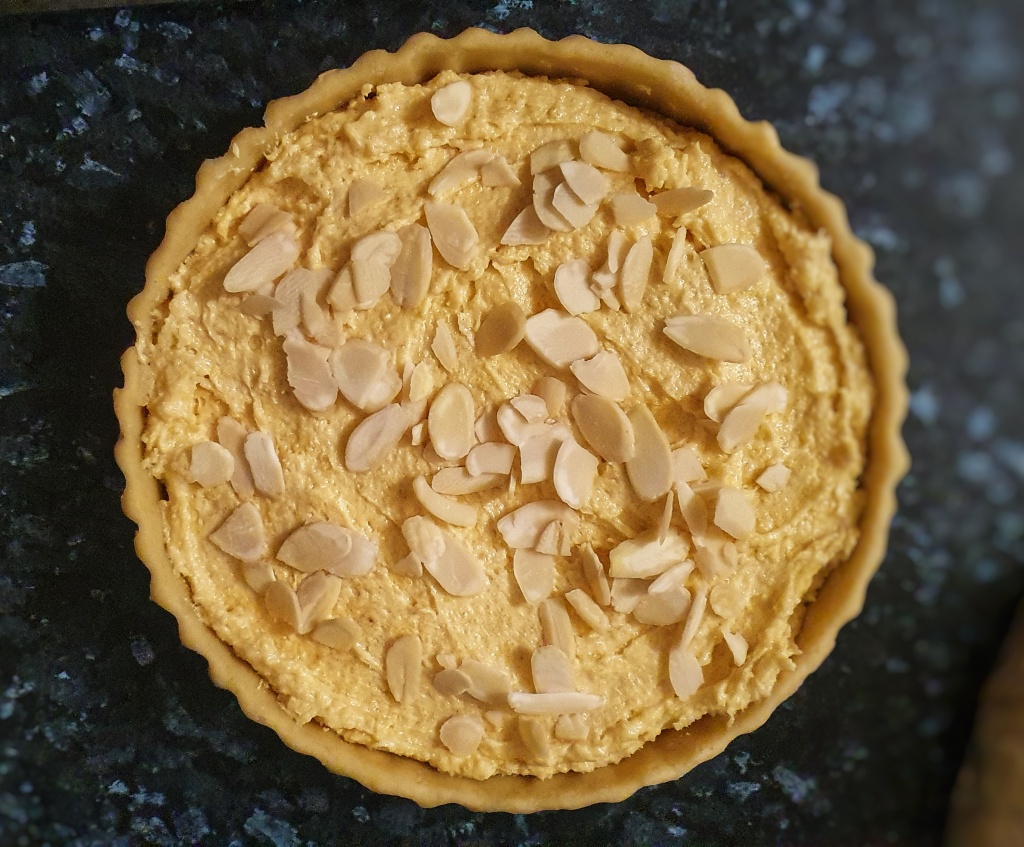
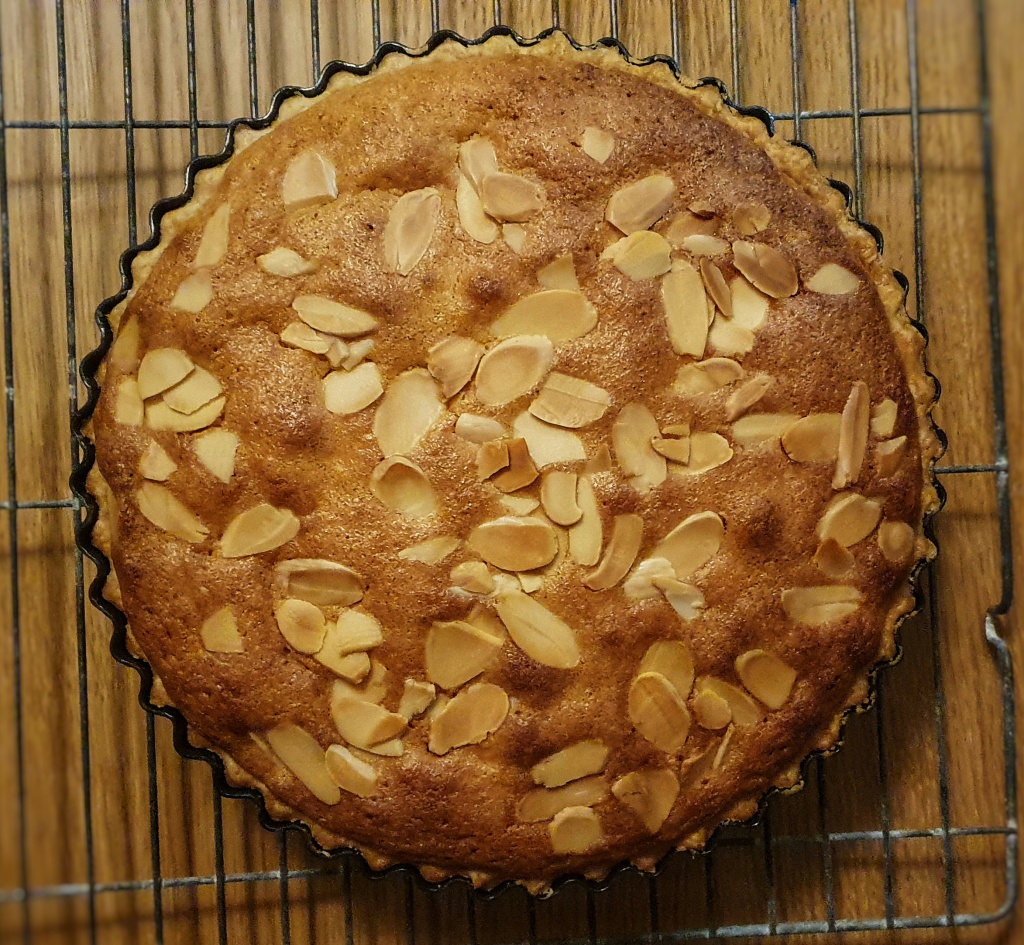
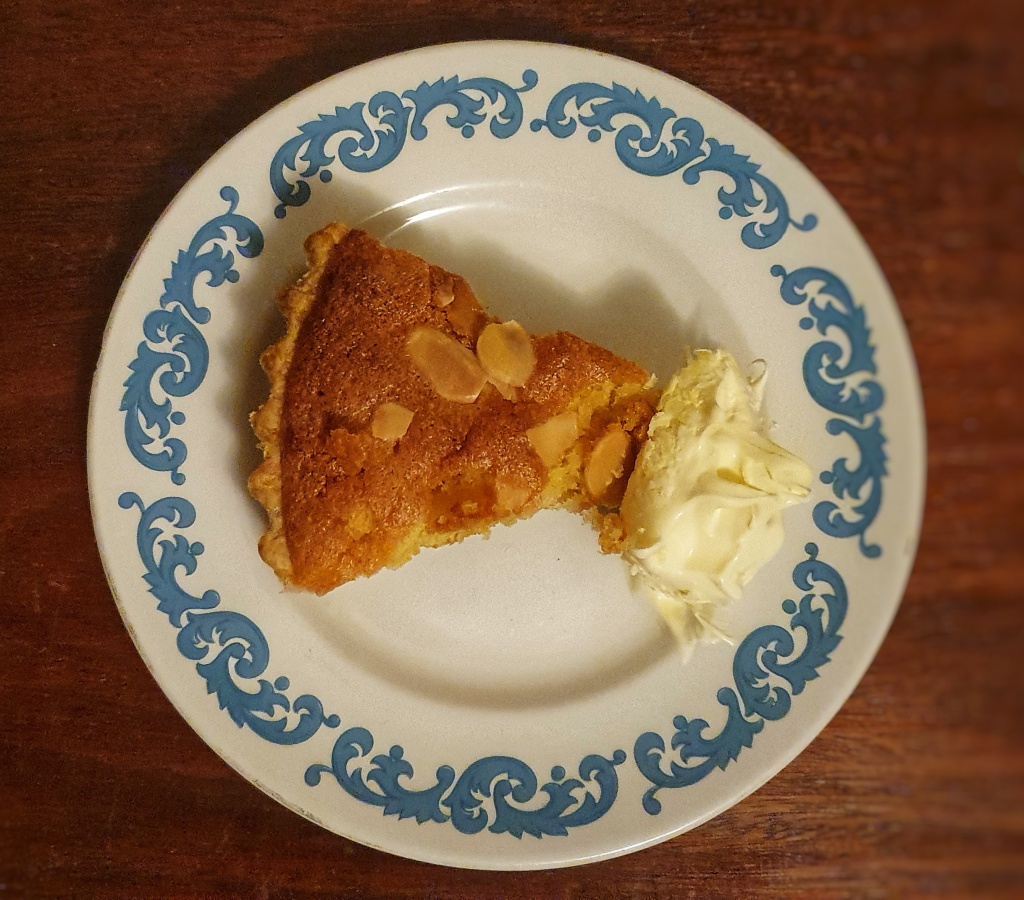
[1] You will find that there is excess pastry – make some nice jam tarts or turnovers.

